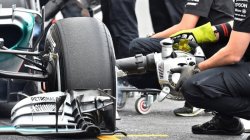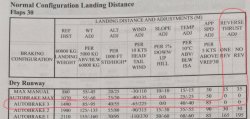Setting sun - flying west in the late afternoon well above the clouds must place a great strain on a the eyes due to glare. What measures are available (other than a good pair of sun glasses) to reduce the glare. Is it possible to black out the windscreen altogether? Do flight crew develop eye problems over time?
Sunglasses don't work all that well. Not only do they darken the image outside the coughpit, but they do so inside as well. Polarised are especially useless, because they turn many of the displays black. All of the airliners that I've flown have had some form of sun screen that can either be pulled down or across windows (the Airbus), or clipped over them (Boeing). I don't know of any eye problems specific to the industry...other than getting older and ending up with a bag full of prescription specs. Those of us who have been around a long time, fondly remember the liners that used to be used on the meal trays. They would take a static charge, and would then stick to the windows.
Landing - a while back I remember reading about a Qantas directive for pilots to use brakes rather than reverse thrust because brake pads were cheaper than fuel at the time. Is this still the case? Conversely I have experienced landings where the aircraft is allowed to simply coast down the runway with only a very light touch of the brakes as the exit taxiway approaches. Qantas will be pleased!
I don't know of any directives in place at the moment. There is a 'green operating procedures' section in the flight manuals, and that covers many topics. None of it is mandatory.
The use of brakes, reverse thrust, and flap selections, is quite a dynamic process. There are reasons for using just about any combination of them that you can imagine. Less flap is the Airbus recommendation in gusty conditions. More flap on shorter runways. Reverse thrust makes appreciable noise, and its use is controlled at many airports, at various times of the day. Braking is used as needed. There is very little point to landing on 34L in Sydney, and stopping in a hurry. If ATC allow, rolling the full length of the runway is the best option. Braking puts heat into the brakes. Sometimes huge amounts. If the aircraft has to depart again in 45-60 minutes, hot brakes will be a restriction.
Tomorrow morning I'll be landing at Melbourne, on either 16 or 34. The landing will most likely use full flap and full reverse. The autobrake will be armed for the landing, but will be disconnected at touchdown. There will be no braking at all until about 80 knots, when there will be one fairly solid application to slow us for the turnoff. Done properly, that will result in brake temps of under 200º. Use of heavier braking would get us off the runway sooner, but the resultant temperatures can be quite limiting...to the point that they can delay subsequent departures.
Reverse thrust....this has been discussed previously, but it does very little other than make the passengers feel good. It is effective on a wet runway, as it tends to blow the water away, allowing the brakes to work better. In itself though, it doesn't do much. There is precious little actual 'reverse' thrust, though it does cancel an engine's residual forward thrust. Limiting its use, does save a little fuel, but more importantly, saves a bit of engine life. So, whilst it will always be selected, it will only be pulled to higher power settings when needed.


















